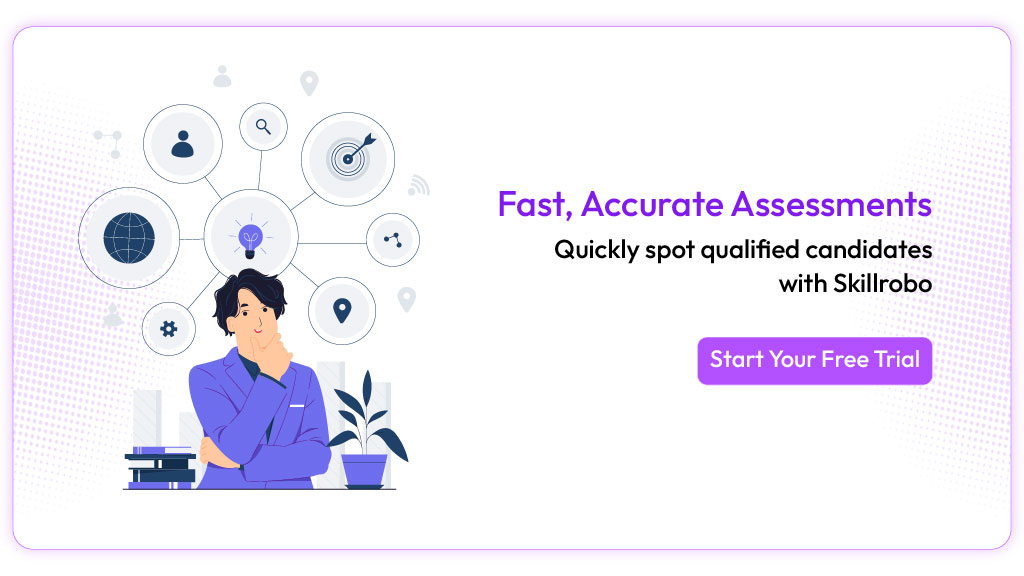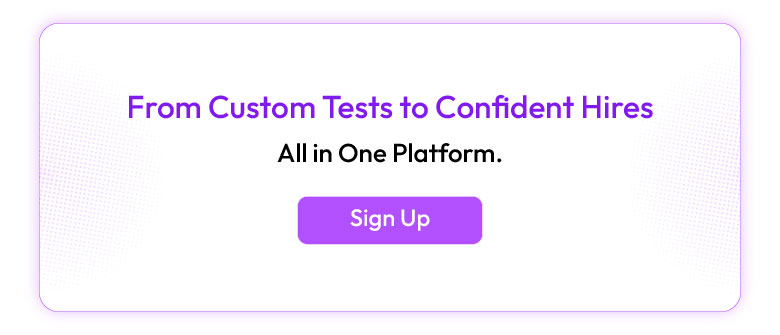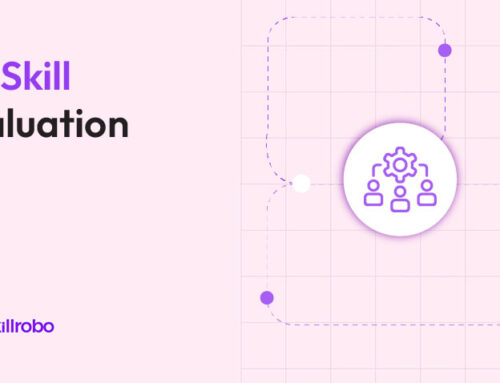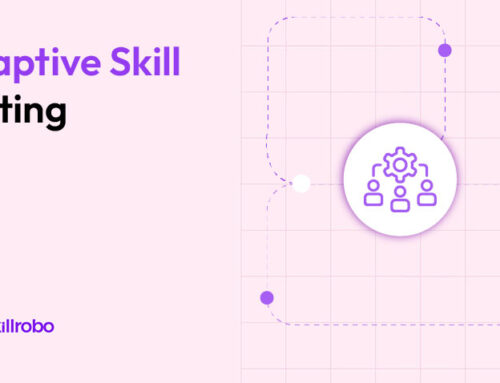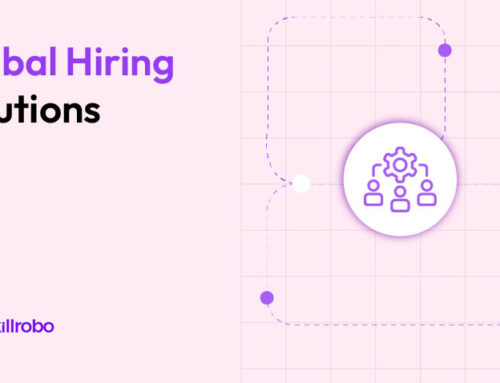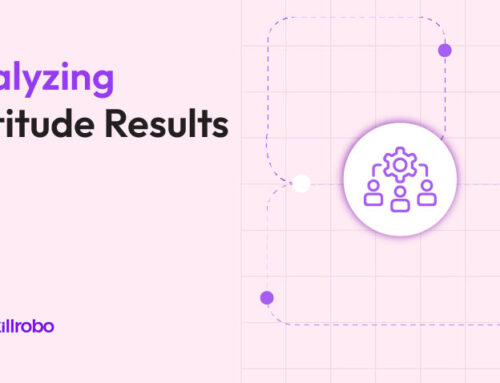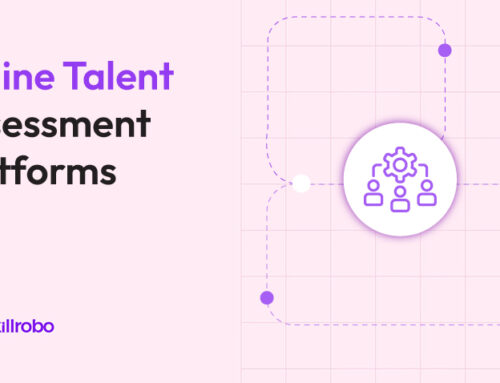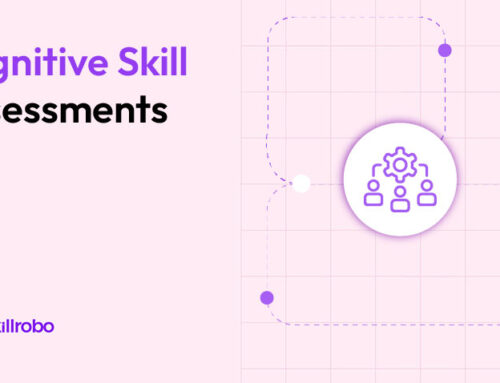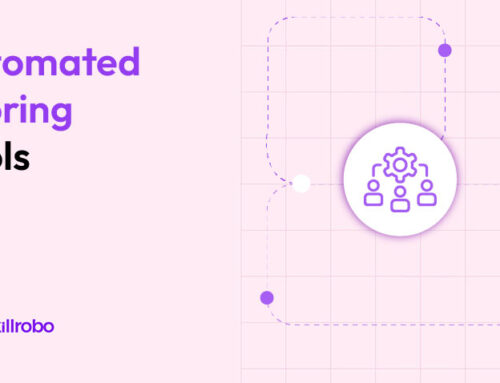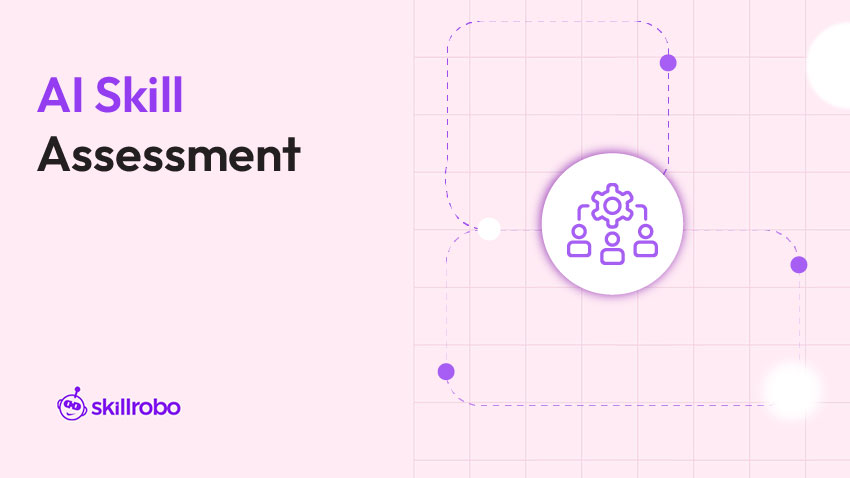
Key Takeaways
- AI enables faster, data-driven skill assessments by identifying real-time gaps and performance patterns.
- Adaptive testing models help personalize learning paths for employee upskilling and internal mobility.
- HR teams gain predictive insights for workforce planning, training investments, and succession strategies.
- Platforms with AI-driven analytics offer higher accuracy and reduce manual evaluation time by up to 60%.
Why AI is Reshaping Skill Assessment and Growth
Workplace agility depends on workforce adaptability. With job roles evolving faster than ever, organizations need precise and scalable ways to assess current skills, uncover gaps, and guide development. Traditional assessments—often manual, generic, or one-off—fail to capture the complexity of modern skillsets. AI-powered skill assessment tools offer a smarter, faster alternative. They evaluate not just what an employee knows, but how they apply knowledge in real-world scenarios. By layering in adaptive testing, automated scoring, and predictive analytics, these tools help L&D teams make more confident talent decisions.
From Static Tests to Dynamic Skill Insights
Traditional assessments often provide a fixed snapshot—what a person knew at a single point in time. But skill development is not static. AI transforms this process by delivering dynamic, real-time insights that evolve with the learner. Instead of relying solely on correct answers, AI tracks how employees arrive at those answers, factoring in response time, decision pathways, confidence levels, and consistency across attempts.
This enables richer, context-driven feedback. For example, if an employee struggles with data interpretation during a project management assessment, the system can automatically recommend Excel or data visualization training, bridging gaps before they become performance issues. Unlike traditional scoring, this approach offers actionable intelligence for managers and L&D teams.
These dynamic insights also support ongoing employee skill assessments, helping HR professionals tailor development plans and monitor growth over time. This means skill tracking is no longer limited to annual reviews—it becomes a living process that adapts to employee progress and organizational needs.
AI’s Role in Skill Gap Detection and Workforce Planning
One of the most transformative applications of AI in employee assessment is its ability to detect skill gaps at both the individual and organizational levels. Rather than relying on subjective manager reviews or sporadic training needs analyses, AI continuously compares employee performance data against established competency models, job role benchmarks, or departmental KPIs.
This automated analysis reveals who needs training, in what areas, and how urgently, removing guesswork from workforce planning. The result is a highly targeted development strategy that aligns learning with both employee potential and business objectives. Here’s what AI unlocks:
Here’s what this enables:
- Skill Maps: AI-generated dashboards visualize workforce capability across departments, job families, or regions. HR teams can immediately see where teams are over- or under-skilled relative to business goals.
- Personalized Learning Paths: Rather than assigning one-size-fits-all training, AI curates individualized course recommendations that match each employee’s specific gaps, improving engagement and retention. Many organizations use online aptitude testing strategies to measure thinking patterns before recommending cognitive or technical upskilling paths.
- Workforce Forecasting: Predictive models assess the future demand for specific skills, based on company goals, tech trends, or project pipelines. This allows HR to build internal talent pipelines proactively rather than reactively. Companies also rely on employee skill assessment data to prioritize hiring, redeployment, or reskilling initiatives in advance.
Tools that offer competency assessment frameworks integrated with AI help HR teams support both upskilling and succession planning with real-time data.
Benefits of AI-Driven Skill Assessment for Enterprises
AI is transforming how organizations evaluate and develop workforce capabilities. Traditional assessments often suffer from manual delays, inconsistencies, and limited insights. By integrating AI-driven skill assessments, enterprises gain faster, fairer, and more actionable evaluations. Below are key benefits that highlight why AI-based assessments are essential for building a future-ready workforce.
| Benefit | How It Helps |
|---|---|
| Faster Evaluation | AI automates test scoring, analysis, and reporting—cutting turnaround times from days to minutes. |
| Consistency & Objectivity | Removes unconscious bias by applying uniform scoring logic across all test-takers and roles. |
| Personalized Feedback | Delivers actionable insights with skill-specific breakdowns, enabling focused 1:1 coaching and training. |
| Skill Gap Visibility | Highlights performance deficiencies and strengths across teams, departments, and locations. |
| Training ROI Measurement | Tracks assessment performance over time to measure the effectiveness of learning programs and reskilling efforts. |
How to Build an AI-Powered Skill Assessment Strategy
Implementing AI-driven skill assessments is not just about adding technology—it’s about creating a structured, outcome-focused approach to talent evaluation. Here’s a simple framework to guide your rollout:
Step 1: Define Core Competencies
Start by identifying the technical, cognitive, and behavioral competencies critical for success in each role. Map these competencies to your organizational goals and departmental needs to ensure relevance. Clear competency frameworks help align assessments with actual business outcomes.
Step 2: Set Measurable Assessment Benchmarks
Establish performance benchmarks that define what good, excellent, or underperforming results look like for each skill. These benchmarks should be specific, measurable, and tied to job performance indicators. Using competency assessment tools can standardize expectations across roles and teams.
Step 3: Automate Scoring and Feedback Cycles
Use AI-based platforms to automate both the scoring process and feedback generation. Adaptive assessments can analyze test patterns, time-on-task, and accuracy to deliver real-time, personalized skill reports. Automation removes bias, speeds up evaluations, and ensures consistent decision-making across hiring and development initiatives.
Step 4: Align Skill Gaps with Internal Mobility Plans
Assessment data should not end with test results—it should feed directly into career development pathways. Identify high-potential employees who can be reskilled or promoted internally. Tailor learning interventions based on detected gaps and use predictive analytics to forecast future workforce needs.
Common Pitfalls When Implementing AI-Driven Assessments
AI-powered assessments offer transformational value—but only if designed and deployed thoughtfully. Without careful planning, companies risk diluting the impact of their assessments or creating unintended candidate experience issues. Here are the key pitfalls to watch for—and practical ways to avoid them:
Mistake 1: Overcomplicating Initial Assessments
There’s often a rush to test everything at once—technical skills, cognitive ability, behavior, leadership traits—resulting in bloated, overwhelming assessments. Overloading candidates reduces test accuracy and increases dropout rates.
Fix: Launch with streamlined assessments focused on 2–3 critical, role-specific competencies. Expand gradually based on data insights after your first few cycles. Simplicity first, sophistication later.
Mistake 2: Ignoring Soft Skills in Assessments
Companies sometimes emphasize hard skills like coding or financial analysis but neglect soft skills such as communication, emotional intelligence, or adaptability. This creates blind spots, especially for customer-facing or leadership roles.
Fix: Blend technical evaluations with soft skills assessments. Use scenario-based exercises, situational judgment tests, or behavioral profiling to gain a full view of a candidate’s strengths beyond technical abilities.
Mistake 3: Relying Solely on Final Scores
Treating assessments as a pass/fail gate based only on total scores can mislead hiring teams. A strong candidate may score lower overall but excel in the most critical competencies for the role.
Fix: Analyze performance patterns, not just overall scores. Look at section-wise results, question response behaviors, and growth potential indicators. Weight core competencies higher during evaluation to prioritize what matters most.
Mistake 4: Failing to Calibrate the AI Model
AI systems need periodic recalibration. Using outdated assessment models risks introducing bias, misaligning benchmarks with evolving roles, and missing emerging skills.
Fix: Review and recalibrate assessment criteria every 6–12 months. Benchmark assessments against current top performers and evolving role expectations. Updating the AI’s learning models ensures ongoing accuracy and fairness.
Mistake 5: Poor Communication with Candidates
Candidates who are unaware of what the assessment evaluates, how long it takes, or why it matters may abandon tests midway or feel disengaged.
Fix: Clearly communicate the purpose, format, estimated duration, and importance of the assessment before inviting candidates to participate. Transparency improves participation rates and creates a more positive employer brand image.
Pro Tip: Treat assessments as part of the candidate experience, not just a screening step. Positive assessment experiences influence top candidates’ decisions to accept offers.
Skillrobo: AI-Powered Assessments That Scale with Your Workforce
Skillrobo brings AI precision into employee assessments with customizable tests that reflect real business needs. Whether you’re evaluating cognitive thinking, technical mastery, or role-based behaviors, Skillrobo makes it easy to design adaptive tests with minimal manual setup.
Its SEYARC AI engine suggests relevant questions based on the skill category selected—ideal for fast-moving industries. With built-in proctoring, detailed analytics, and customizable reporting, Skillrobo supports upskilling and internal mobility without overwhelming your HR team.
Conclusion: Smarter Insights, Stronger Teams
AI isn’t replacing the human touch in talent management—it’s enhancing it. By automating repetitive evaluation steps, detecting invisible gaps, and personalizing training, AI-powered assessments help companies future-proof their teams.
The shift from one-time testing to continuous skill visibility creates more agile organizations ready to evolve with market demands. For HR leaders focused on growth, AI isn’t just an upgrade—it’s a game-changer.
Sign up for Skillrobo to create AI-powered employee assessments that drive smarter workforce development.
Table of content
- Key Takeaways
- Why AI is Reshaping Skill Assessment and Growth
- From Static Tests to Dynamic Skill Insights
- AI’s Role in Skill Gap Detection and Workforce Planning
- Benefits of AI-Driven Skill Assessment for Enterprises
- How to Build an AI-Powered Skill Assessment Strategy
- Common Pitfalls When Implementing AI-Driven Assessments
- Skillrobo: AI-Powered Assessments That Scale with Your Workforce
- Conclusion: Smarter Insights, Stronger Teams

